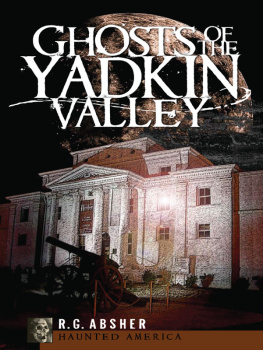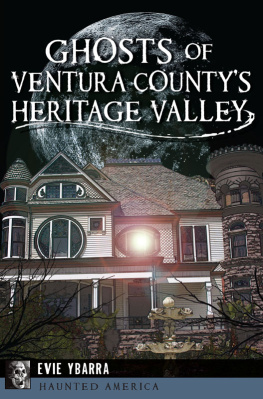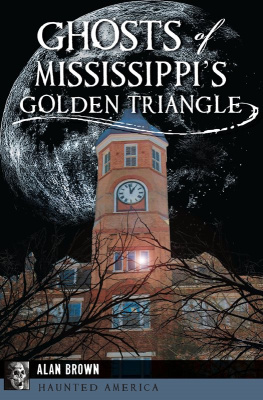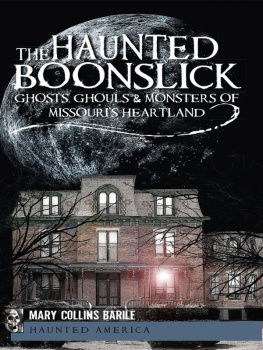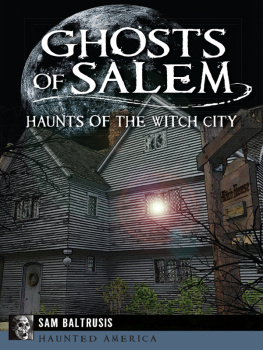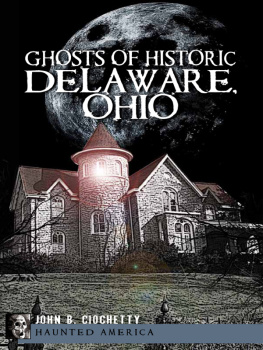

Published by Haunted America
A Division of The History Press
Charleston, SC 29403
www.historypress.net
Copyright 2009 by Richard Jackson and William Jackson
All rights reserved
All images are courtesy of the authors.
First published 2009
e-book edition 2013
Manufactured in the United States
ISBN 978.1.62584.345.6
Library of Congress Cataloging-in-Publication Data
Jackson, Richard.
Ghosts of the Triangle : historic haunts of Raleigh, Durham and Chapel Hill/ Richard Jackson and William Jackson.
p. cm.
Includes bibliographical references and index.
print edition ISBN 978-1-59629-833-0 (alk. paper)
1. Ghosts--North Carolina--Research Triangle Park Region. 2. Haunted places--North Carolina--Research Triangle Park Region. I. Jackson, William. II. Title.
BF1472.U6J33 2009 133.1097565--dc22 2009030605
Notice: The information in this book is true and complete to the best of our knowledge. It is offered without guarantee on the part of the author or The History Press. The author and The History Press disclaim all liability in connection with the use of this book.
All rights reserved. No part of this book may be reproduced or transmitted in any form whatsoever without prior written permission from the publisher except in the case of brief quotations embodied in critical articles and reviews.
CONTENTS
INTRODUCTION
Since the beginning of recorded history, man has written of the afterlife and of those who have returned to walk the earth. North Carolina has a particularly rich history, and along with that history comes the deep-rooted folklore that goes hand-in-hand with historic places. Some of our ghosts are well known around the country, such as the Civil War soldiers that still haunt Fort Macon at Atlantic Beach and Fort Fisher at Kure Beach. There are also the many haunts of Wilmington, along with the infamous little red man of Winston-Salem. Asheville has the Pink Lady of the Grove Park Inn, while the mountains have the Brown Mountain lights. All of these stories are famous and are linked to important places in North Carolina. What about the Triangle? Lying quietly in the middle of the state sits the capital city of Raleigh, surrounded by Durham and Chapel Hill.
Growing up in the Triangle and in the South was a unique experience. Religion and folklore walk hand in hand, along with the tradition of storytelling. Sitting on back porches and under shade trees on hot summer evenings as the sun sets, children learn of their roots and their family histories by those who have lived it. On many of these occasions in our youth, there would be a ghost story or two shared by the old folks. These stories were told with the intention of making the young shiver in their Chuck Taylors and lose sleep watching the closet door. We personally believed these stories but never gave them a lot of thought until both of us experienced things that we could not explain.
Prior to these incidents, we would have said that we believed in ghostsbut did we really? More than anything, the experiences made us curious and led us down the path of wanting to know more. We found that through our search for answers about the paranormal we could not help but see the correlation between ghost stories, folklore and history. A ghost is something, or someone, from the past that has passed from this earth and then returned. Its the same for historyhistory is time that has passed and has come back to us as a memory (or as a class in which we caught up on our sleep in high school). We have found that history and folklore are great companions and that folklore is a great way to make people eager to learn more about the things, places and people around them. We hope that the stories in this book will spark interest in the locations where they take place and that people will become curious about the rich history of the Triangle area.
It is not entirely by accident that this collection of stories came together. Growing up in North Carolina and being students of folklore and ghost stories, we could not have avoided being influenced by the great writers of North Carolina ghost and legends. Authors such as Nancy Roberts, Charles Whedbee and John Harden have all inspired us personally and entertained generations of adults and children alike. We would like to thank these legendary writers for their inspiration, as well as those who have passed on many of these wonderful tales from generation to generation, so that everyone may share the rich history of this great state.
PART I
CHAPEL HILL
The history of Chapel Hill and the history of the University of North Carolina at Chapel Hill are one and the same. In 1789, the North Carolina General Assembly charted the creation of the University of North Carolina, which was to be the first public university to admit students in the United States. The University of Georgia had been chartered by the Georgia General Assembly in 1785 but did not admit students until 1801. Near an old Anglican church, the cornerstone was laid for the East Building on October 12, 1793. In February 1795, a young man named Hinton James, having walked all the way from Wilmington, North Carolina, arrived at the university as its first student. He was alone for two weeks before other students began to arrive. The university grew and prospered over the years and survived the dark days during and after the Civil War. The doors were closed briefly during Reconstruction, due to political and financial strife, but the school survived these times and again reopened its doors to students. In 1932, the process of consolidating the universities in North Carolina into one system began. The system became fully coeducational in 1965, as the Womens College of North Carolina became the University of North Carolina at Greensboro. It was during this period that the original campus became known as the University of North Carolina at Chapel Hill.

The Old Well on the campus at the University of Chapel Hill.
Today, the school has one of the most beautiful campuses in the United States and boasts traditions that rival any other university in the nation. The campus at UNC is made up of quads, the two main being Polk Place and the Pit. Polk Place is named after President James K. Polk, who was a native of North Carolina and an alumnus of the university. The Pit does not have a great namesake, but it is the central part of the campus for the students. The bookstore and dining halls are located at the Pit, and it is close to the library. When the weather is nice, the Pit becomes a melting pot of students, talking and relaxing during the time that one could only hope is between classes.
Close to this hot spot, across the street between the Pit and Keenan Stadium, where the Carolina football team plays, is the Morehead-Patterson Bell Tower. The bell tower is a stunning sight, especially in the fall as the sun slowly sets, and the tower is illuminated against the autumn sky. Across the campus, between the Old East and Old West Buildings, is the Old Well. Modeled after the Temple of Love in the Garden of Versailles, the Old Well was built on the spot of the original working well at the university. It is said that if incoming freshmen drink from the well, they will receive straight As for their first semester of classes. This myth can be discredited by an ungodly number of people. Across McCorkle Place, near the infamous Franklin Streetthe staging ground for the many celebrations for national titles and other big basketball game victoriesstands the most controversial student at the school. Silent Sam is a monument that was built to honor the many young men that left the school to fight in the Civil War. Some argue that the statue represents the fight to uphold the practice of slavery, but supporters of the statue say that Silent Sam represents those who, as in most wars, did not make the policies or start the war but were drafted to fight in it.



